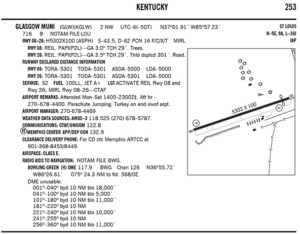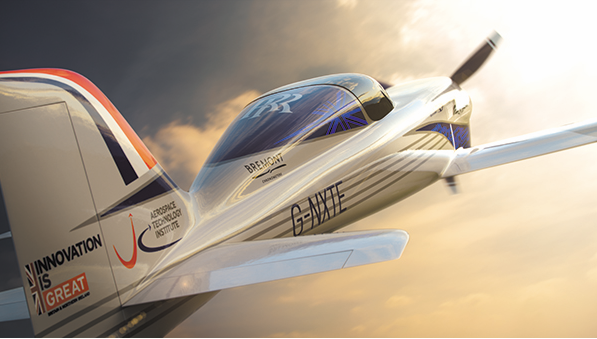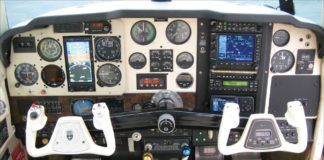Looks Like … Or Is?
In the November Briefing segment about the Rolls-Royce electric airplane, Russ Niles states it “…bears resemblance to the Relentless unlimited racer at the Reno Air Races.” I’m sure Russ is aware that the Relentless Racing airplane was built from a Nemesis NXT kit which is also what Rolls-Royce used as the basis for their airplane. I wish Rolls-Royce had given credit for the airframe by referring to it as an electric-powered Nemesis NXT, but I guess that wouldn’t have fit the needed corporate image.
Always look forward to getting my issue of IFR.
Ed Goodman
Texarkana, Texas
Russ Niles confesses that he actually did not realize it’s the same airframe. Instead he merely noticed and reported on the similarity. Thanks for pointing this out.
Any Science Behind Currency?
We all know that to be IFR-current we have to perform six approaches in six months. I recall a past article in either IFR or IFR Refresher where the scientific rationale for the six-month period was stated, and I’d like to reference that material.
Alas, my magazines have been recycled. I would be so grateful if you could please query your contributors as to who might have penned the article and let me know the citation describing the scientific basis justifying the six-month periodicity. I ask in the context of my academic pursuits—a reviewer of one of my manuscripts has posed this very question and my literature search comes up with nada.
Douglas Boyd, Ph.D.
Sugar Land, Texas
We’ve been doing some research and came up empty. Short of surveying every contributor to both magazines in the last 15 years—an unrealistic task—we did ask a few likely candidates. We only got one meaningful (but unfortunately equivocal) answer.
Fred Simonds replies:
I did a quick-and-dirty web search and discovered one interesting hit on William Charles Ocker, the real father of blind flying, circa 1926, preceding Jimmy Doolittle’s flight “under the bag” in 1929.
As for possible sources it could have been Pan American, the first organization to adopt his methods.
He co-wrote the world’s first instrument flight manual in 1932. The Army Air Corps was skeptical as usual, but Russia pirated a copy and used it as a standard text. Could have been them.
My father was a Link Trainer Instructor in the Air Corps beginning in 1942 by which time IFR was fully embraced. If I had to guess, the Army had the resources to do the research. Instrument-trained pilots received a coveted “green card” to prove they were certified, which might have carried a currency requirement.
Sorry, that’s the best we were able to uncover. Perhaps one of our readers has more definitive information. We’ll ask…
Where Are Those Turkeys?
I enjoy reading Elaine Kauh’s IFR Clinics. A few days before Thanksgiving I was reading about the Glasgow, Kentucky, approach in your December issue and I was following along using Jeppesen charts. I don’t think I’ve ever seen a warning that turkeys were in the vicinity of the airport. The remark doesn’t appear on the FAA chart.
Was this a seasonal joke from our friends at Jeppesen?
Andrew Doorey
Chapel Hill, North Carolina
(Enclosure: Jeppesen KGLW 10-9 Airport Diagram showing the notation, “Turkeys on and in vicinity of airport.”)
As amusing as it would be as a seasonal joke, the note is real. While it doesn’t appear on the AIS (FAA) charts, it is in the Chart Supplement. We like that Jeppesen places what it deems to be important notes directly on the airport diagram. We just wish that Jepp would let us publish their charts for reference.
ICAO and War?
Thanks for the very interesting article on the ICAO. You mention that many countries came to Chicago for the 1944 convention despite the risk. Did Germany, Japan and Italy come? I see online that Germany was a signatory in 1947; even the US wasn’t a signatory until 1946.
David Johnson
Eden Prairie, Minnesota
Fred Simonds, the article’s author, replies:
My best information comes from two State Department tables, one older and the other updated on July 14, 2021. They show all 193 U.N. countries listed were invited, including Germany, Italy, and Japan, although I doubt they showed up. The 52 countries that signed at the end of the Chicago Convention on December 7, 1944, must have been attendees, but some attendees might not have elected to sign at that time.
There are two Agreements. The first is a status list and runs five pages. It is progressive in that it tracks who signed, when ratified, when adhered to, and entry into force. Thirty-seven countries signed the first Agreement at the Chicago Convention on December 7, 1944.
The second concerns an Air Services Transit and Air Transport Agreement. Forty-five countries signed the agreement on the spot.
Germany, Italy, and Japan did not sign either Agreement until well after the war. They were admitted to the Convention under Article 93, which provides admission of other states by a four-fifths vote of the U.N. assembly. It includes a provision that other states can be admitted provided the assent of any state invaded or attacked “during the present war” by the state seeking admission shall be necessary. In other words, Germany could not apply for admission of occupied France without France’s assent, presumably by their government in exile, which surely was not forthcoming. At the war’s end, this proviso became moot.
Note 9 in the document indicates that “The participation of the Federal Republic of Germany effected in accordance with the provisions of Article 93 of the Convention and resolution of June 9, 1955, by Assembly of ICAO. Effective June 8, 1956.”
Italy has an identical statement with different dates: a resolution passed on May 16, 1947, became effective on November 30, 1947.
Japan has the same statement with respective dates of July 1, 1953, effective on October 8, 1953.
There are two anomalies. I wrote that Liechtenstein was not invited because it had/has no international airport. But the Swiss had an existing 1923 customs territory agreement with Liechtenstein, which they agreed to extend to include tiny Liechtenstein under their Swiss membership.
Second, the Cook Islands is not a member of the U.N. However, it was allowed to sign the Convention and become a member ICAO country.
Finally, ICAO is a standards body but not a regulator, just as INTERPOL is not an international police force. Sovereign countries would never cede authority to any multi-country organization. Instead, regulators are by country, such as the FAA, British CAA, and so on.
Thanks for the opportunity to dig into this a little further.

That Is Legal, Isn’t It?
Okay, I’ll bite. Why wouldn’t GPS be a legal way to identify the MAP on the KWVI LOC RWY 02 in “Your Instructor Lied” November 2021? The FAA chart shows a distance from NALLS. If that procedure was loaded and either distance from NALLS or RW02 is displayed in the GPS, why would that not be legal?
I’ve had quite a few pilots ask for a good resource to improve their instrument flying knowledge and IFR Magazine is always my first response.
Nathan Souleret
Mobile, Alabama
It is legal. However, in preparing the article one obscure interpretation came up and there wasn’t sufficient time before deadline to get a positive determination. Hence, the vague language in the article. We’ve since ruled out a convoluted interpretation, leaving the use of GPS to identify fixes on a VHF-nav approach.





